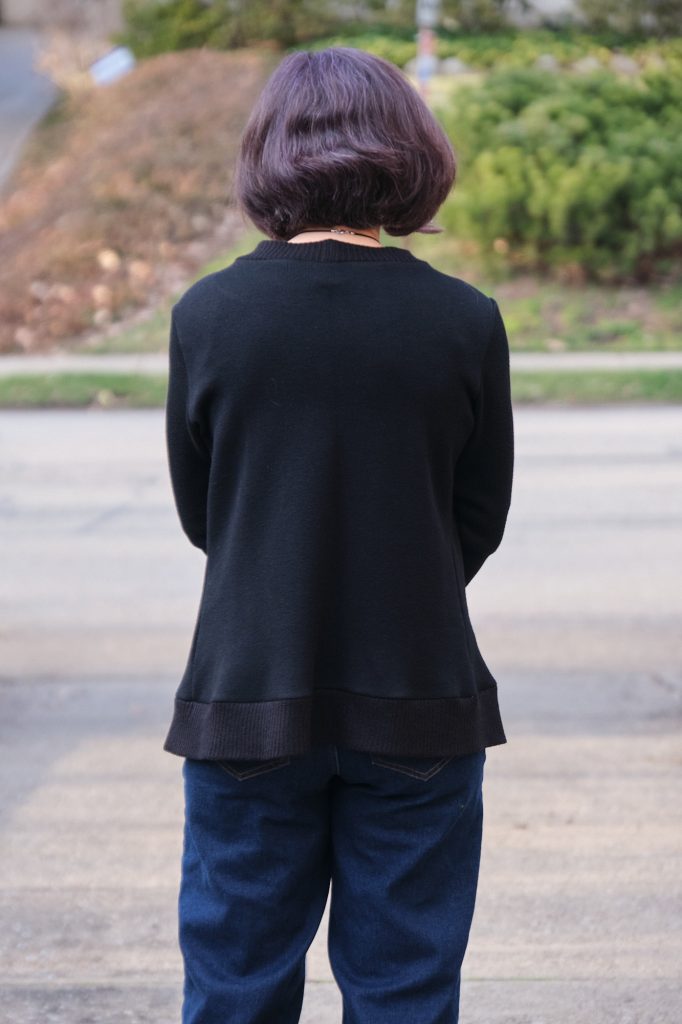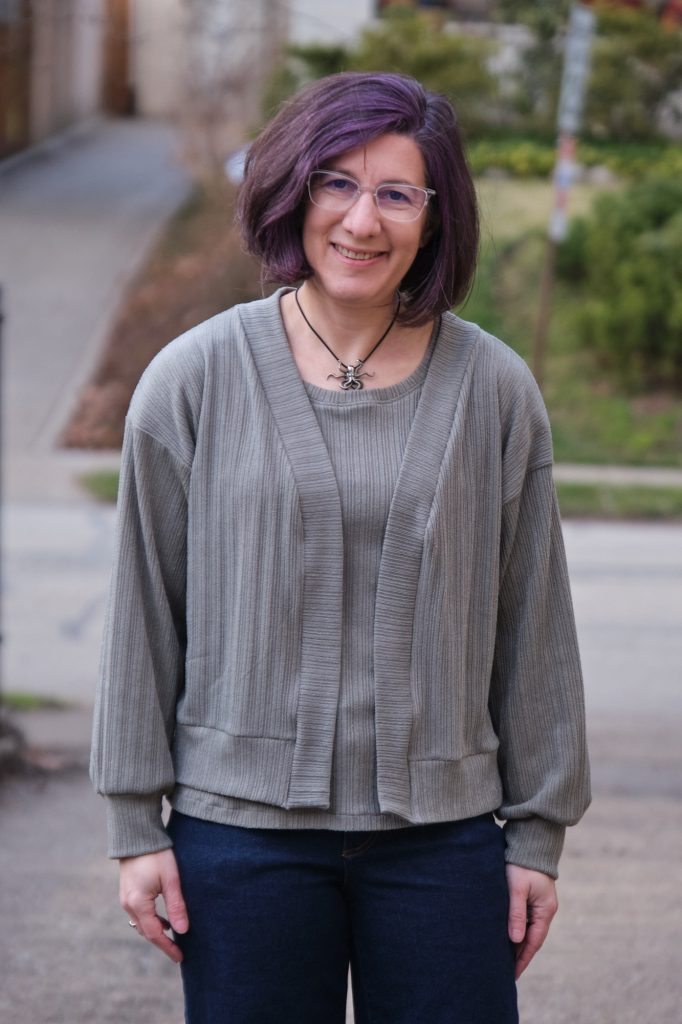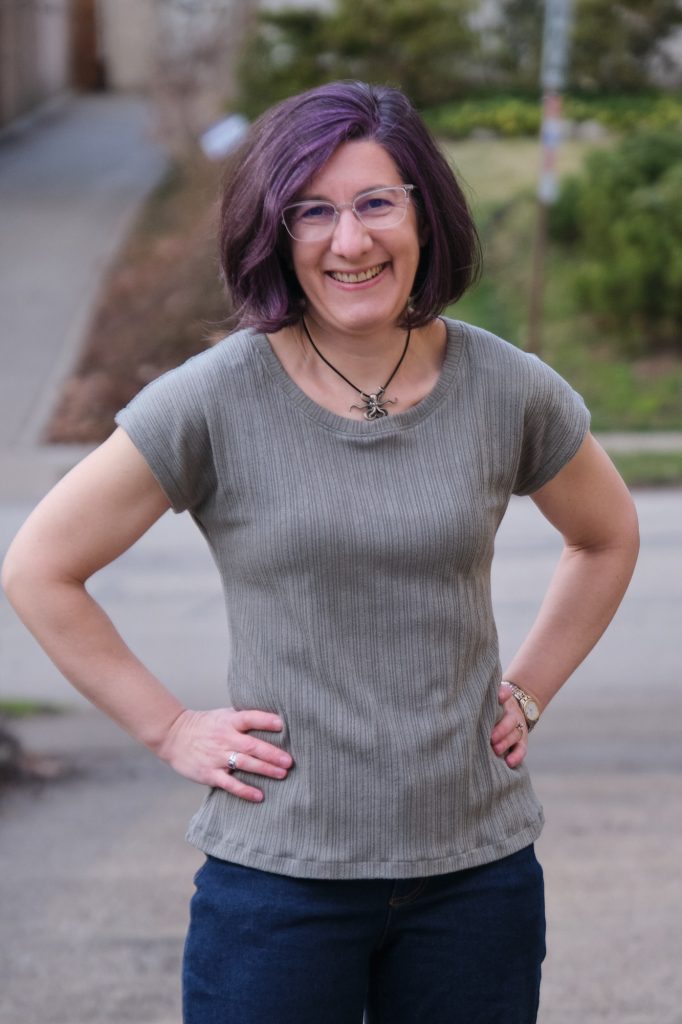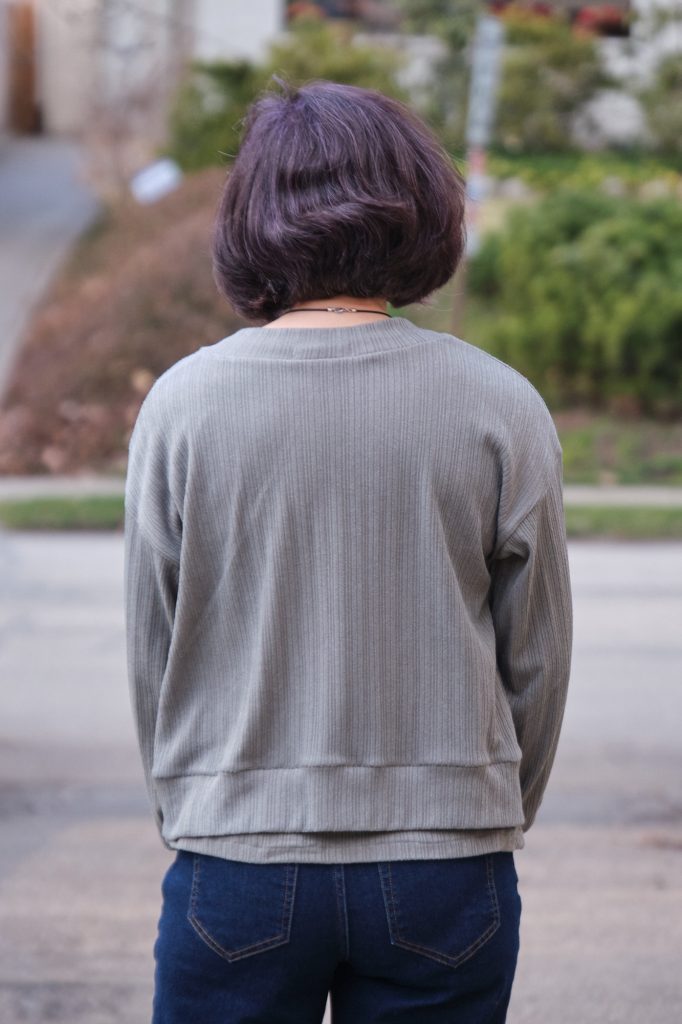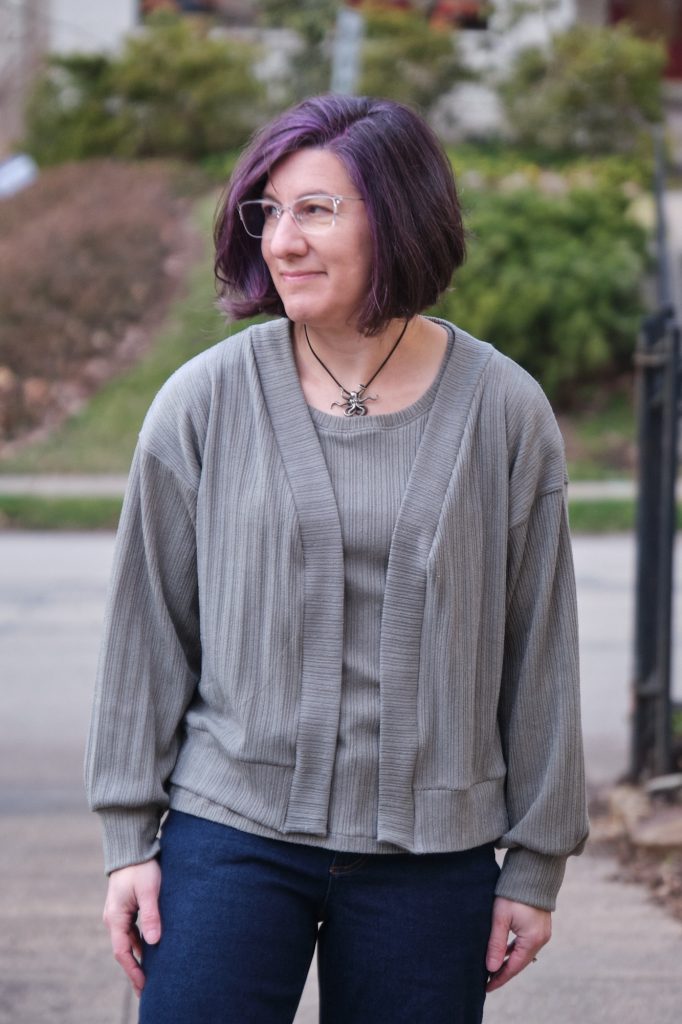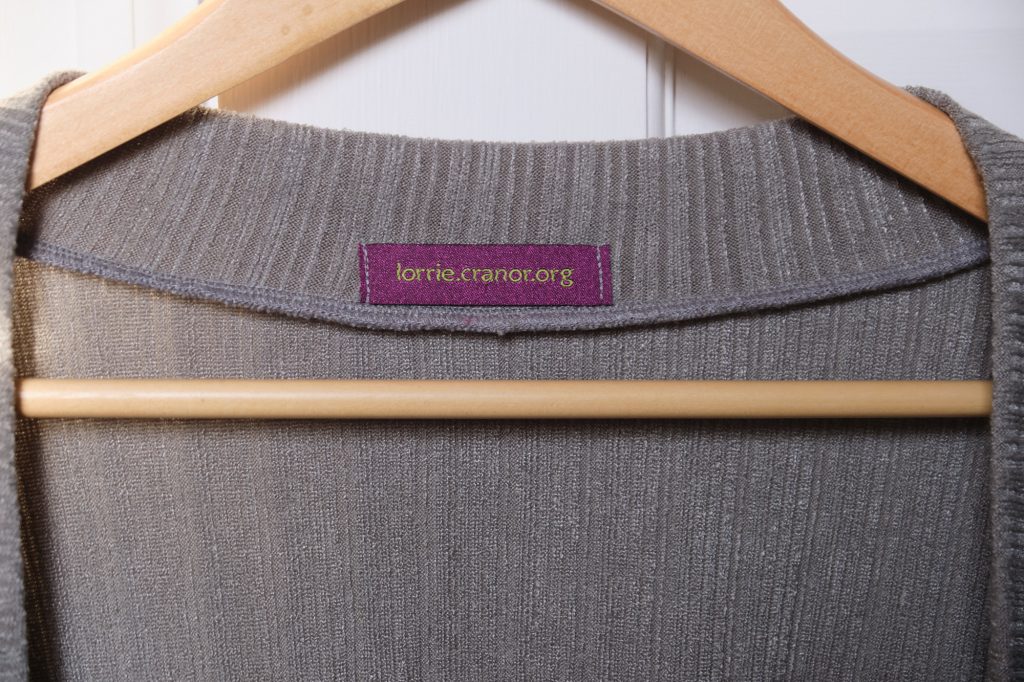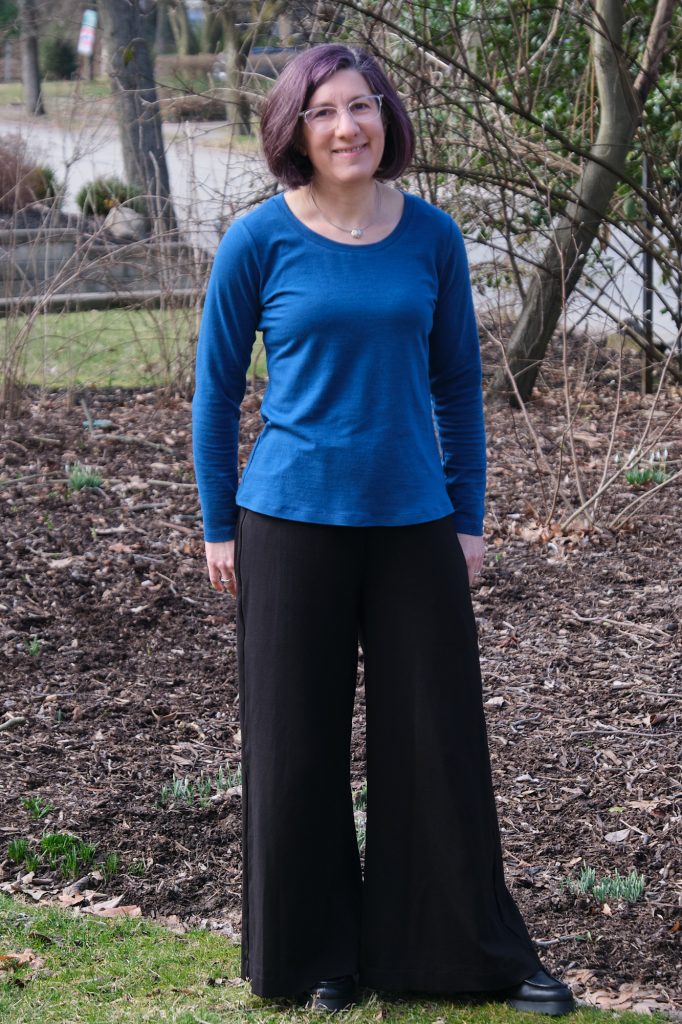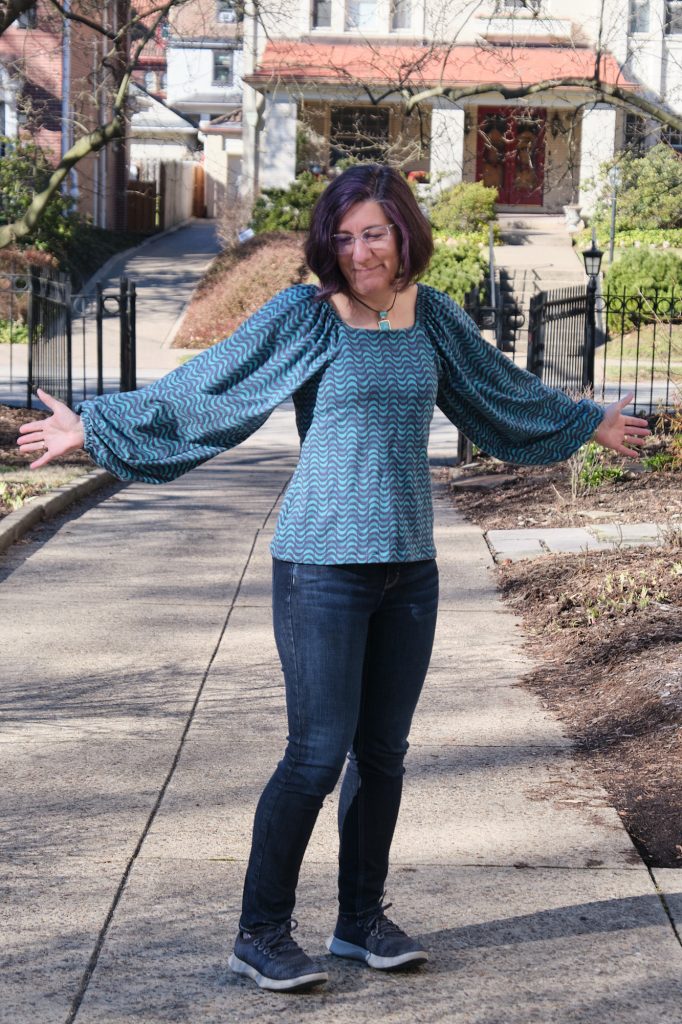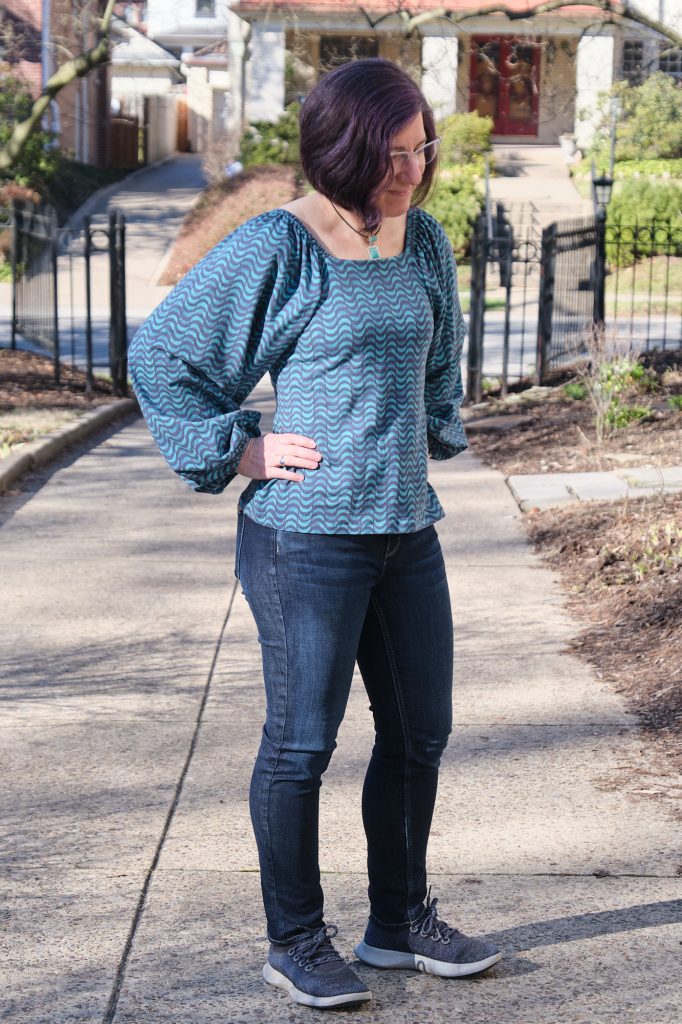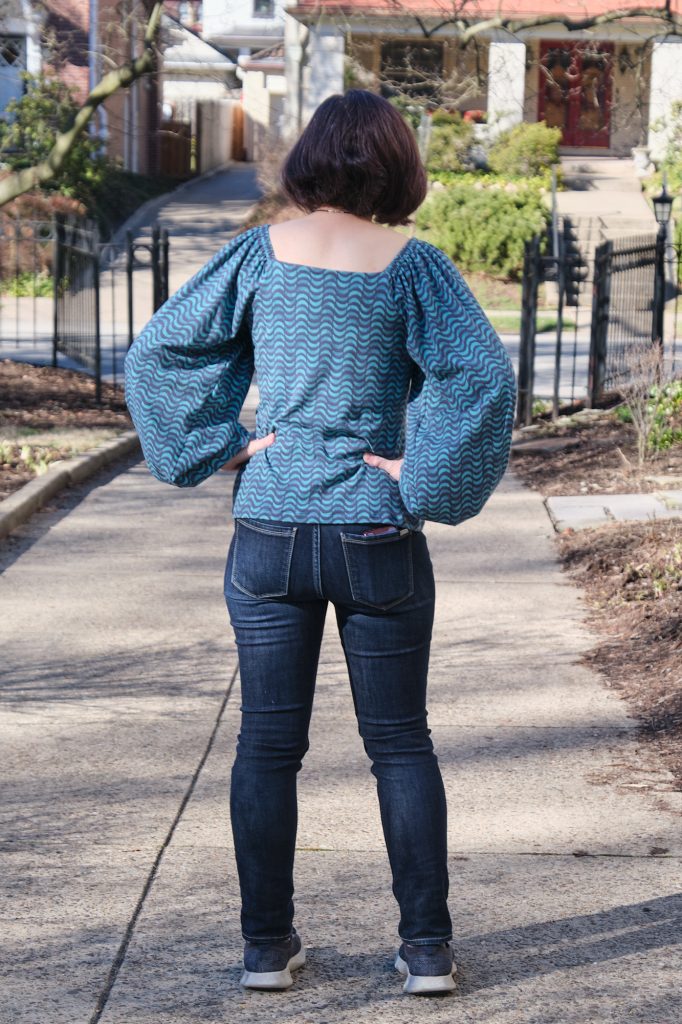I stocked up on sweater knits from online fabric stores during the winter clearance sales and now my sewing room is overflowing with soft and cuddly sweater fabric. Most of it will wait until next fall before I use it, but I was eager to sew up some of it while it is still winter.
I decided to start by making a cardigan sweater out of the super plush and warm ebony Morraine Double Cashmere Sweater Knit from Surge Fabrics. This fabric is 44.5%Rayon/35.9%Poly/19.6%Nylon with a weight of 320gsm and 75% horizontal/50% vertical stretch. It is a thick, lofty fabric with a somewhat squishy and very soft feel, but it is also fairly stable with good recovery. I used the Banff Ultra Thick 1×1 Rib Sweater Knit for the bands and cuffs. Banff has similar fiber content — 50%Rayon/28%Poly/22%Nylon — but it is slightly heavier at 350 gsm and has 75% horizontal/25% vertical stretch. Although the specs are similar, the Banff is much less stable and tends to stretch out (as I discovered when I used Banff to make a dress a couple of months ago) and unravel at the edges. In fact I had a hard time cutting the bands out without inadvertently stretching it in the process. But it produces lovely bands and it matches the Morraine perfectly!
I thought about using the Grab A Cuppa cardi pattern I tried last week, but decided I didn’t want to make something so slouchy out if this heavy fabric. Instead I went with the free Sinclair Harper pattern with some modifications. Based on my previous Harper sew, I knew my usual size was fairly snug so I sized up one size to 6p. I also wanted a slightly shorter length, but not as short as the crop length, so I shortened the classic-length bodice by 2.5 inches. I don’t like the feel of neck bands that creep up my neck so I lowered and widened the back neck and narrowed the band by .5 inches on each side (cutting the band 1-inch narrower). To compensate I widened the inner edge of the front bodice by .5 inch and narrowed the shoulder to match the altered neckline on the back bodice. I estimated the new length for the neck band, but it ended up being much too long, so I iteratively shortened it until I got it right.
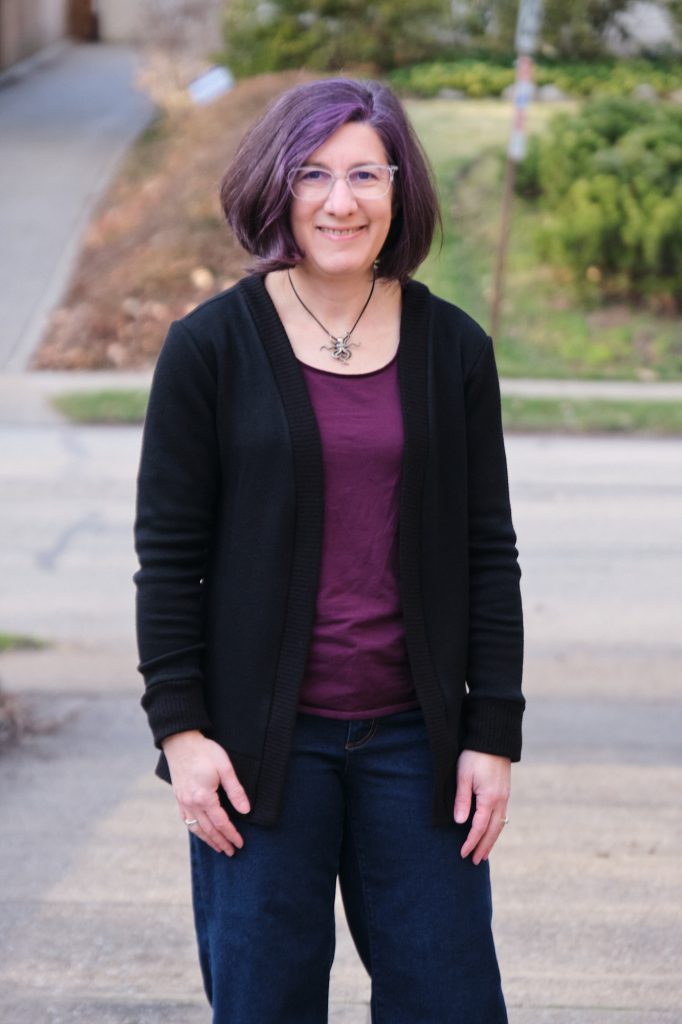
I serged my black cardi with my usual medium-grey serger thread. That’s the only serger thread I have and when I bought my serger last year I swore I would never rethread it. But threads break and I was forced to learn how to rethread it earlier this year. After many failed attempts I think I am now capable of performing a complete rethread of all four threads in about 5 minutes. Now I think having black serger thread on hand would be a good idea, as I have a number of projects planned with dark fabrics and it would look a bit nicer.
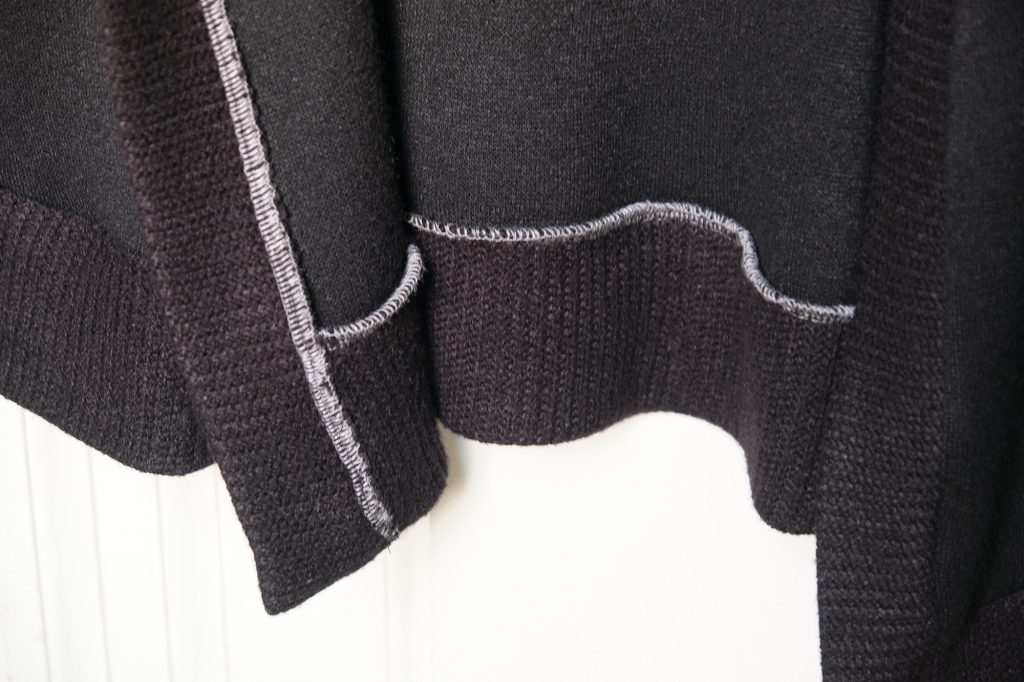
My Harper modifications worked pretty well. The Morraine was easy to sew on my serger. The Banff was mostly ok, but my serger was definitely not happy about sewing through four layers of Banff where the two bands meet. I resorted to sewing one side on my sewing machine. In the end the bottom corners did not work out as well as I had hoped (same problem I had with the Cayambe last week), but with some hand sewing and a lot of pressing I got them mostly straightened out ok. I debated whether to top stitch the seam allowance of all the bands but decided not to as the top stitching would add a significant ridge to this squishy fabric. I can always go back and add the top stitching later.
Overall I’m very happy with this cardigan. It is very warm and cuddly feeling, and has a nice tailered look.
